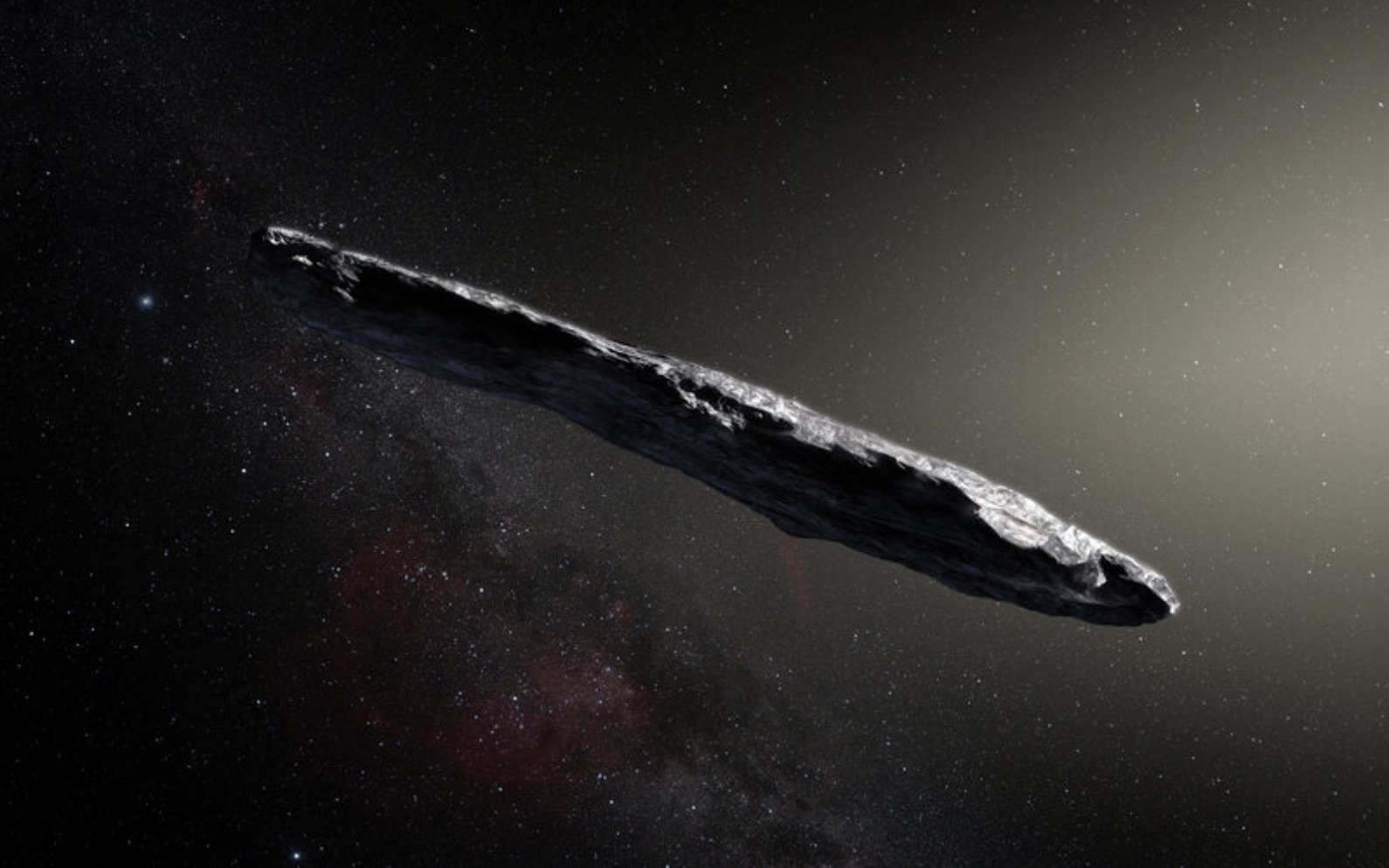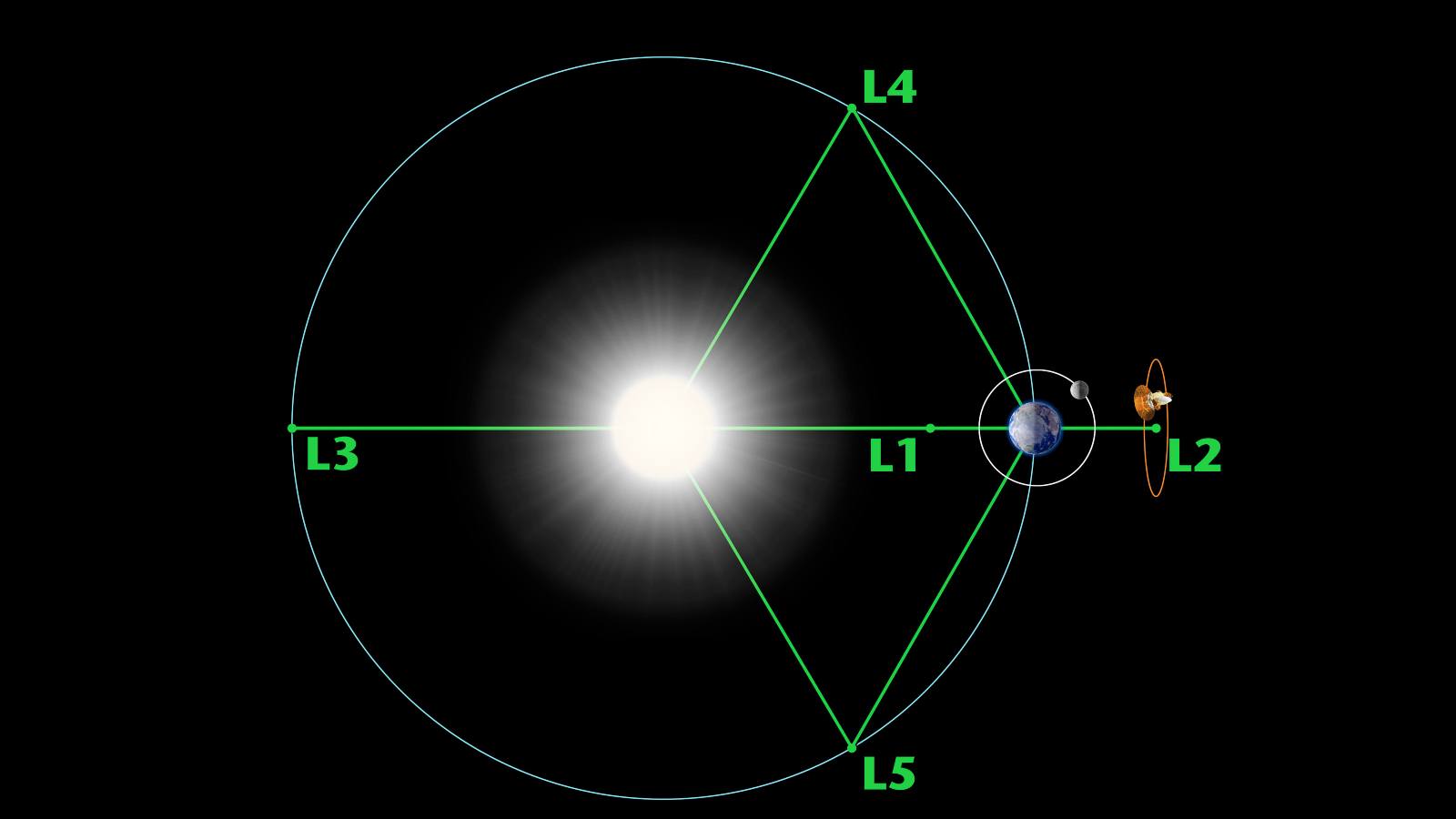Scientists want to build an ‘interstellar interceptor’ to play hide-and-seek with the next ’Oumuamua
Researchers want to build a spacecraft to lurk in far-Earth orbit and chase down interstellar objects as they whizz through the solar system.

A team of scientists has proposed building an "interstellar interceptor," a spacecraft capable of getting up-close and personal with the next asteroid or comet to enter the solar system.
So far, astronomers have spotted two such objects whizzing through our star system: The cigar-shaped interstellar visitor 'Oumuamua, which was first spotted in October 2017 and made headlines as a suspected alien probe, and the comet 2I/Borisov, which astronomers first spotted in August 2019.
Sending a probe to investigate interstellar objects would allow astronomers to photograph the space rocks' surfaces more accurately and potentially even take samples of gases that seep out from comet interlopers like 2I/Borisov. However, by the time telescopes detect such interstellar objects, it is too late to design, build and launch a spacecraft to chase after them, so these travellers end up sailing through our star system and taking most of their secrets with them when they leave.
To get around this problem, researchers drafted and submitted a proposal to the arXiv preprint database on Nov. 3. Their study, which has not yet been peer-reviewed, suggests that a space agency, such as NASA, should build and launch an interstellar interceptor that can wait patiently in far-Earth orbit. Then, once astronomers detect an incoming interstellar object,the probe can rapidly fly off to intercept the invader on its path through the solar system.
Related: Could there be a link between interstellar visitor 'Oumuamua and unidentified aerial phenomena?
The best place to store an interstellar interceptor in space will be one of Earth's Lagrange points, the researchers proposed. At these points in space, the gravitational pull of two large masses, in this case the Earth and sun, roughly cancel each other out, allowing small objects like satellites or asteroids to stay relatively fixed in one position, according to NASA.
The team have identified the L2 Lagrange point, which is also home to NASA's James Webb Space Telescope, as the best place to park the spacecraft because it will allow the probe to intercept a wide range of potential trajectories that alien space rocks may take through our cosmic neighborhood.
Sign up for the Live Science daily newsletter now
Get the world’s most fascinating discoveries delivered straight to your inbox.
The proposed interstellar interceptor would wait in low-power mode — possibly for decades — until a suitable candidate is detected, at which point scientists could send the probe to the best possible location to cut off the interloper.
But we may not need to wait that long for the next visitor to come calling.

Astronomers already suspect that multiple interstellar objects pass through the solar system unnoticed every year. The construction of new state of the art telescopes, such as the Vera C. Rubin Observatory in Chile, which is expected to be fully operational in early 2024, will allow scientists to spot more of these objects than ever before.
The authors of the new study predicted that when Chile's new observatory is fully operational, it will detect between one and 10 interstellar objects every year. The researchers therefore concluded there is a 95% chance that an 'Oumuamua-like interloper can be detected and surveyed by a potential interstellar interceptor within the next decade.
Related: Interstellar interloper 2I/Borisov may be the most pristine comet ever observed
Now is the perfect time to build an interstellar interceptor, the researchers argued, because it could be launched and installed in orbit by the time we have the capacity to spot more interstellar objects.
This is not the first time that researchers have drawn up plans to track down such solar system visitors.
In February, a separate group of researchers proposed that by slingshotting a spacecraft around, Earth, Venus and then Jupiter, scientists could launch a probe to catch up to and intercept 'Oumuamua in the outer reaches of the solar system, known as the Oort cloud, which extends up to 100,000 times farther out from the sun than Earth, according to NASA. However, in order for this to work, the proposed mission would have to be launched by 2028, or else the mysterious object will be out of our reach forever.

Harry is a U.K.-based senior staff writer at Live Science. He studied marine biology at the University of Exeter before training to become a journalist. He covers a wide range of topics including space exploration, planetary science, space weather, climate change, animal behavior and paleontology. His recent work on the solar maximum won "best space submission" at the 2024 Aerospace Media Awards and was shortlisted in the "top scoop" category at the NCTJ Awards for Excellence in 2023. He also writes Live Science's weekly Earth from space series.










